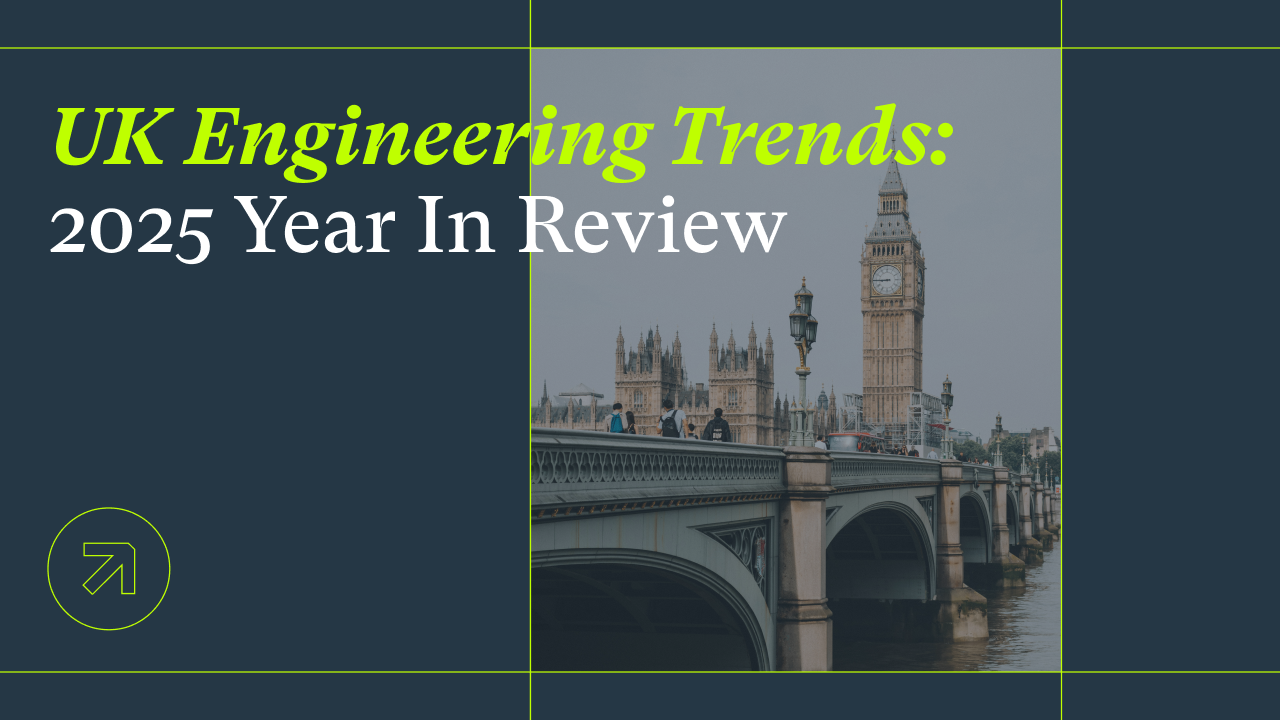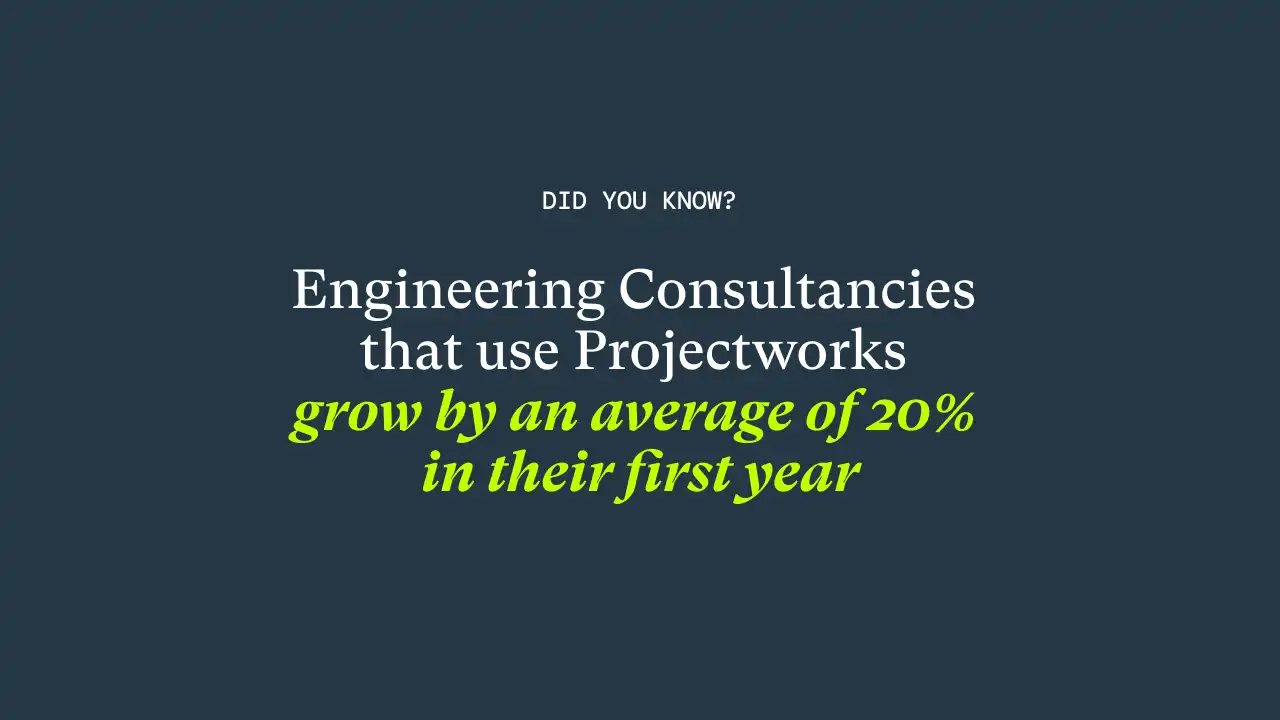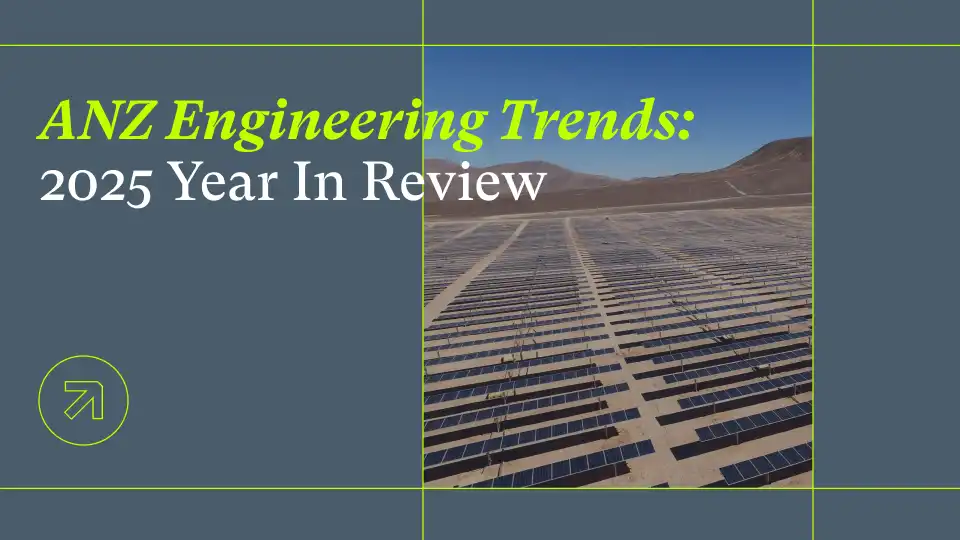2025 UK Engineering Trends: A Year In Review

As 2025 nears its conclusion, we’ve taken stock of all we’ve heard in conversation with Engineering Consultancies across the UK – and what made the difference for firms that grew.
Across UK engineering in 2025, the work arrived. The firms that grew turned that visible-yet-unpredictable pipeline into projects that finished on time, on budget, and at the margin they planned. They managed a multitude of unique challenges by building a high performance delivery engine and ran it with calm discipline. This included four key parts working together in one rhythm: a live view of capacity and skills, time and expenses people actually use, real time project accounting, and insight that triggers action – only made possible by the use of a modern PSA software platform. In this review we look at what shaped 2025, where firms were tested, and where the opportunities are for UK Engineering Consultancies in 2026.
The Project Pipeline Grew, But Profitable Delivery Was Challenging
Public investment signalled a strong year, yet approvals often moved slower than expected. Big programmes of work were broken into smaller projects so clients could test delivery partners and spread risk. For many UK firms the calendar became lumpy, and projects came in waves. None of this erased the opportunity – it simply changed how leaders needed to plan. Those who pitched aggressively on what they were the best at and planned capacity well, converted more opportunities in profitable work.
Mixed Signals In The Numbers – Some Engineering Firms Thrived, Others Struggled
On paper the market was healthier than in recent years. In practice results were varied. Some firms grew at pace. Others treaded water. Boards and investors asked for proof rather than promises. That pressure improved internal habits: time and expenses discipline strengthened and project accounting was managed carefully with simple weekly views that showed work done, what slipped, budget remaining and expected finish. When the information was that clear, teams course corrected sooner and senior leaders made faster commercial calls.
People Costs And Talent Shortages In The UK Engineering Sector Demanded Honest Capacity Planning
From April onwards payroll costs stepped up. Senior talent was harder to hire and more expensive to retain. Graduates moved faster than usual, often chasing pay to ease cost of living pressure. Margins felt tight. The response that worked was pragmatic – leaders shaped clearer resourcing plans before bids went out, and used a plain weekly view of every active job to move people, request scope changes or walk away before a bad package drained their bench. Saying no to the wrong work protected capacity for the right work.
PSA Software Enabled Crucial Team Culture Shifts
The firms that grew did not rely on last minute heroics. With the right information made available thanks to PSA Software, they nailed the basics and made them visible for the whole team to see and act on.
- A standard weekly cadence. What finished, what slipped, what happens next, and who owns it.
- Honest capacity planning with the people you have, not the team you hope to hire.
- Early risk visibility. Budget burn, projected margin and remaining effort in view.
- Clean time capture and fast approvals so commercial calls could be made sooner.
- Change raised early and priced fairly, which kept client and partner relationships steady.
These small operational muscles made a big difference. They meant that project risk was seen in plain sight, and intervention happened while there was still time to protect margin.
Resource Management Software Was One Of The Keys To Profitable Delivery
Resourcing was the difference between control and chaos. The firms that grew in 2025 treated capacity as a live model rather than a static spreadsheet. Skills and seniority were visible before saying yes to projects. Leaders modelled scenarios by week to check knock on effects on other jobs if a project landed. The goal was not perfect accuracy, rather a transparent view of who is likely to be available and when, so people could move with less friction and fewer late nights. Many firms found that the discipline created room for better choices, steadier utilisation and healthier teams.
Transparent Proof Made The Difference in Client & Partner Relationships
In a risk-averse UK landscape, clients rewarded partners who showed, not told. Trasnaprency was key, and simple weekly status updates kept trust intact. Reports covered work done, what had been invoiced, budget remaining and the expected outcome and timeline. When a change was needed, it was raised early with a clear reason and impact on cost and schedule. That transparency often turned one project into several.
In a year where conversion was patchy, relationship quality became a growth strategy in its own right.
Live, Accurate Time-Tracking Software Unlocked Healthier Engineering Relationships
Clean time and expense management did more than tidy admin. They gave project leaders the precise and accurate information they needed to manage client and partner expectations. Teams that simplified time entries and made approvals part of the weekly rhythm saw fewer disputes and clearer conversations with clients. For busy engineers, easy to use time tracking software was non-negotiable.
AI In Engineering Moved From Hype To Practical, Measurable Outcomes
The tone around AI changed – less noise, more practical use cases. Teams used AI where repetition lives. Proposal first drafts, RFI summaries, meeting minutes that assigned actions to owners, and onboarding packs that helped new engineers enter active client relationships with context. As we collectively started to see our way through the hype bubble, the principles of AI-use became simpler:
- Start where teams already waste time.
- Keep sensitive information in secure systems.
- Human oversight on anything that reaches a client.
- Measure success by hours returned to design, coordination or QA.
Growth Opportunities for UK Engineering Consultancies Heading Into 2026
Two scenarios define the next year, and both reward the same habits.
- If work approvals accelerate, firms with calm delivery engines will convert pipeline into predictable revenue and scale without burning their people.
- If approvals stay slow, the same discipline still wins through sharper bid selection, scenario planning and tighter change control.
Either way, the path is the same. Keep your core delivery engine tight. Invest in the habits that make project performance transparent and predictable.

Make Sure You Have A PSA Software Platform That Enables A Profitable And Scalable Delivery Engine
The operating model for high growth UK Engineering firms only becomes possible when the core systems sit together. A modern PSA software platform like Projectworks connects resource management, time and expense tracking, invoicing and reporting in one purpose-built platform.
Related Articles

2025 In Review: The Trends Shaping AU & NZ Engineering Firm Growth
In 2025 for the Engineering Sector down under, pipeline was the conversation irrespective of what side of the ditch your firm sat on. In Australia the pipeline grew quickly across energy, transport, water and social infrastructure. However, turning that momentum into consistent, profitable delivery was still hard for many firms. In New Zealand the public pipeline only became visible toward the end of the year. It was a tougher run, and leaders had to think differently about growth. The firms that moved ahead in both markets built a high performance delivery engine and ran it with calm discipline, thanks to visibility of all key project and business profitability metrics.

Scaling a Consulting Firm: The Cheat Sheet Every Consulting Leader Needs
Scaling a consulting firm isn’t theory for us - it’s lived experience. We've developed a play-by-play cheat sheet that comes from years of leading and growing firms through every messy, exhilarating stage of the journey. We've made every mistake along the way, which means you don’t have to.
.webp)